
It’s easy to get in a salad rut, turning to the same kind of lettuce every time. Why not go beyond iceberg, romaine, or leaf lettuce and try some more interesting options? Spring is the perfect time to experiment with salad greens, and this post will help you get acquainted with all that leafy stuff at the grocery store.
When you purchase or harvest lettuce, you should wash or rinse it, then store it wrapped in a cloth or paper towel, then in a plastic bag, in the crisper drawer. Store lettuce away from apples, pears and bananas. These fruits release ethylene, a ripening agent which will speed the decay of the lettuce. Because of its high water content, lettuce cannot be frozen or canned for long-term storage. It should always be eaten fresh, within about 10 days of purchase or harvest.
Nutritional content varies among lettuces and greens, though most are filled with Vitamin A and potassium. With the exception of iceberg, most varieties are also a good source of Vitamin C, iron and calcium. Lettuce is also a good source of dietary fiber.
When it comes to making a salad, try creating your own mix by tossing together at least three varieties. Here’s a basic formula:
- Use a mild lettuce or green, like Boston, bibb or endive
- Another should be a crisp lettuce or green, like romaine or cabbage
- The third kind should be tart, peppery, or bitter greens, like arugula or radicchio
After your foundation of greens is mixed, you can add other goodies like carrots, cucumbers, and tomatoes. Or you can venture into the more exciting world of salad-toppers, including edamame, beets, hearts of palm, sunflower seeds, toasted pine nuts, artichoke hearts, and more.
But wait a second. How do you tell arugula from endive? Mizuna from mesclun? Here’s a guide to recognizing and using the various greens in the produce section.
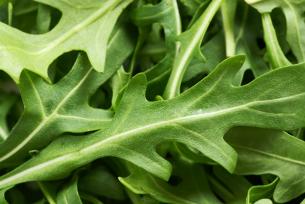
Arugula (pictured above)
Also known as: Rocket
Leaves are: Dark green and tender
Taste is: Bitter and peppery, with a slight mustard taste
Try this arugula salad with tomatoes and avocado.
Butterhead (pictured above)
Includes: Bibb and Boston Lettuce
Leaves are: Loosely formed heads of pale “wrinkled” leaves, smooth buttery texture
Taste is: Sweet and mild
Great on summer sandwiches!
Cabbage (pictured above)
Can be: green or red. Red is sometimes known as “purple cabbage”
Leaves are: crisp and crunchy
Taste is: bitter and sharp
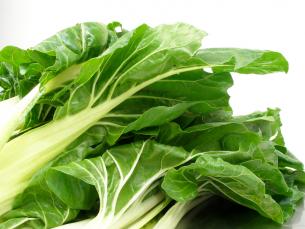
Chard (pictured above)
Also known as: Swiss Chard
Leaves are: large, deep green, “wrinkled” leaves are always eaten cooked
Taste is: similar to beets, while the stalks are somewhat like celery
Try it in this Bean and Swiss Chard soup recipe
Dandelion Greens (pictured above)
Leaves are: tender, flat, with jagged edges
Taste is: bitter
Young dandelion leaves may be used in salads, but the larger ones taste best when they’re cooked
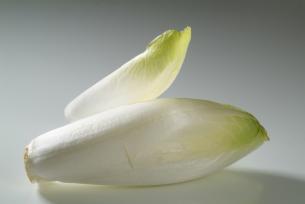
Endive (pictured above)
Leaves are: tender and smooth
Taste is: mild and bitter. The lighter the endive, the milder the flavor is.
Their spoon-like shape makes them perfect for dips or try filling them with crab or chicken salad.
Leaves are: wide and frilly
Taste is: mild. This is a good one to add for “fluff” and texture
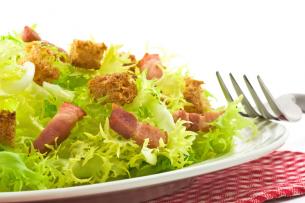
Frisée (pictured above)
Leaves are: long, wide, and curly. Usually green, but sometimes edged in red
Taste is: slightly peppery or nutty
Try it with blue cheese, walnut, and cranberry on a crostini.
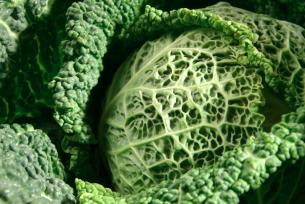
Kale (pictured above)
Leaves are: broad and ruffled, ranging from deep green to a bluish purple
Taste is: very mild, with cabbage undertones
The site Veganyumyum has a delicious-sounding recipe for kale salad with orange-blackberry vinaigrette. Kale is also often served cooked, as in this recipe with cranberries and pine nuts.
Iceberg (pictured above)
Leaves are: tender, crisp, and pale-green
Taste is: mild and crunchy
Perfect for a make-ahead salad with peas
Leaf Lettuce (pictured above)
Leaves are: either red-tipped or dark green, ruffled and tender
Taste is: mild but interesting
Enjoy this lettuce on sandwiches or hamburgers
Mesclun (pictured above)
The term mesclun comes from the French word for a mix of tender young salad greens. You can buy this pre-mixed in bags, or make your own blend.
Leaves are: Varied, as a mesclun could include arugula, frisée, radicchio, dandelion greens, fresh herbs, and other salad greens
Taste is: Depends on the greens included, but is usually “bitter” or peppery
This is good to mix with a milder lettuce or spinach for a great tossed salad!
Try poached eggs with pancetta and tossed mesclun
Radicchio (pictured above)
Leaves are: crisp, deep red and white
Taste is: bitter and peppery
A honey-citrus dressing is the perfect foil for radicchio’s peppery bite
Romaine (pictured above)
Also known as: cos
Leaves are: long green leaves, with a crunchy center vein
Taste is: bitter and succulent
This lettuce is used in a Caesar salad, or great for a taco salad
Spinach (pictured above)
Leaves are: tender, dark green, and sometimes wrinkled, sometimes smooth
Taste is: slightly bitter and somewhat hearty
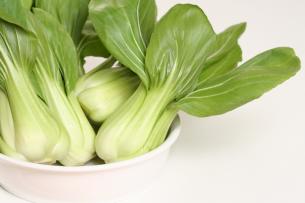
Tat Soi (pictured above)
Also known as: spoon cabbage or baby bok choy
Leaves are: spoon shaped
Taste is: peppery
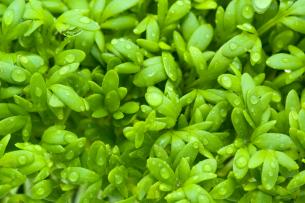
Watercress (pictured above)
Leaves are: small and dark-green on long stems
Taste is: strong and peppery
This sounds amazing: avocado and watercress salad with a soy-apple dressing
If you are new to startcooking, or are a regular visitor here, please consider subscribing for free.




























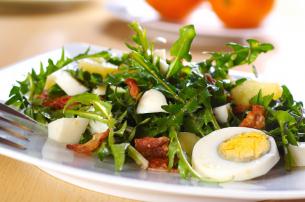
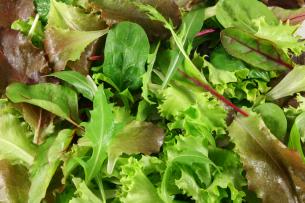
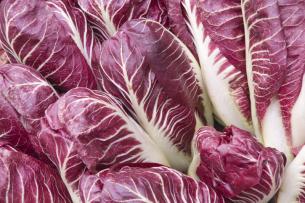
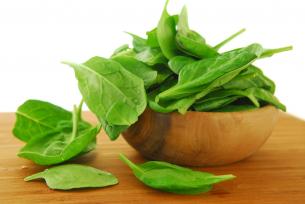













KGWagner said:
This is an excellent compilation of useful information. Until a few years ago, almost all my “salads” were made from Iceberg lettuce until I found out the stuff is practically a plastic food. You have to mix it with something, or it has so little nutritional value it’s barely worth eating. But, by adding some of the other greens mentioned here, as well as some other tasty tidbits, you can make something quite healthy and delicious.